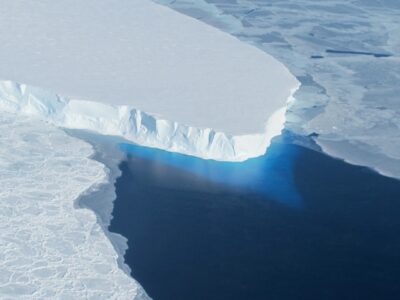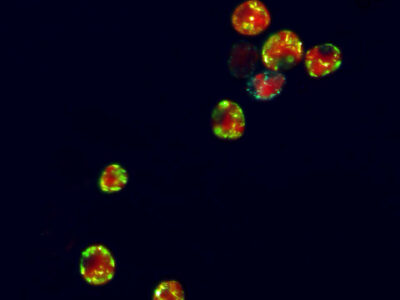The global ocean covers 70 percent of the planet and is essential to humanity’s survival, providing food, sustaining livelihoods, and capturing and storing huge amounts of carbon dioxide from the atmosphere. A key scientific question for oceanographers and climate scientists is just how much CO2 can the ocean keep absorbing as the planet warms? This is also a key question for society and for decision-makers working to stem climate change.

“In all the projections we have for the future of the climate state, the amount of carbon absorbed in the ocean is critical to the amount of warming that occurs,” said Galen McKinley oceanographer and carbon cycle scientist at Columbia University’s Lamont-Doherty Earth Observatory. “So, we need to monitor the [carbon] sink as it evolves.”
Scientists estimate that since the Industrial Revolution, the ocean has absorbed about 40 percent of all the carbon dioxide emitted into the atmosphere due to the burning of fossil fuels, but there remains much uncertainty in how the ocean carbon cycle will change in the future. This is in part because scientists are only able to regularly sample about two percent of the world oceans, and must extrapolate to the other 98 percent using statistical techniques.
A newly funded project, led by McKinley, will use modern data science techniques to improve on this extrapolation process. Using the sparse measurements of amount of carbon dioxide in seawater (pCO2) collected by the National Oceanic and Atmospheric Administration (NOAA) and others, the team will improve the quantification of variation in space and time of pCO2 across the global oceans. From these mapped estimates, the team can estimate air-sea CO2 exchange going back to the 1980s. These approaches also allow for ongoing monitoring of how the ocean carbon sink is responding to climate change and atmospheric CO2 levels.
The endeavor builds upon the work of Lamont ocean science pioneer, the late Taro Takahashi, who pioneered the instruments and approaches that are now used to collect these data. Takahashi’s observing approaches are now implemented across the globe. Takahashi first documented how the oceans both absorb and give off huge amounts of carbon dioxide, exchanging it with the atmosphere. As a result, among many other things, scientists now know that a large part of modern humanity’s carbon emissions reside in ocean waters.
McKinley says that through the three-year project, which is a partnership with NOAA, they aim to create a data analysis system that can interpolate intelligently and efficiently, with as little uncertainty as possible, to monitor how the ocean sink is changing. This understanding is vital information for decision-makers working to mitigate climate change.

The ocean is the dominant sink for human-emitted fossil carbon. Going forward, the ocean is expected to continue doing this work if we continue to put a lot of carbon in the atmosphere. However, there is much guesswork around the way the ocean will behave as atmospheric CO2 changes. For instance, new research has demonstrated that the ocean will reduce how much and how quickly it absorbs CO2 if the atmospheric concentration lessens.
“If we were to cut our carbon output dramatically, the evidence that we have in recently published papers is that the ocean sink is going to respond, ‘Hey, great, you’re not stuffing so much into me so I don’t need to take up so much.’ Then more carbon than expected is going to remain in the atmosphere,” explained McKinley. Put another way, if we were to cut greenhouse gas emissions by 50 percent, the reduction in the rate of accumulation in the atmosphere could be a much lower percent. This would be because the ocean is naturally equilibrating with the atmosphere, taking up less CO2. This equilibration is an entirely natural response, but has big implications because it could create a negative feedback on our ability to mitigate climate change.
The goal of this research is to better understand how the ocean carbon sinks work so climate scientists can make better projections that inform the choices of decision-makers.
“The better we quantify it, the better we can determine the emissions pathways that are required to achieve levels of climate change that will not be excessively disruptive to humans and ecosystems,” said McKinley.




As we remove carbon dioxide from the atmosphere some carbon dioxide will re-evolve from the oceans back into the air. What do we know about this phenomenon?